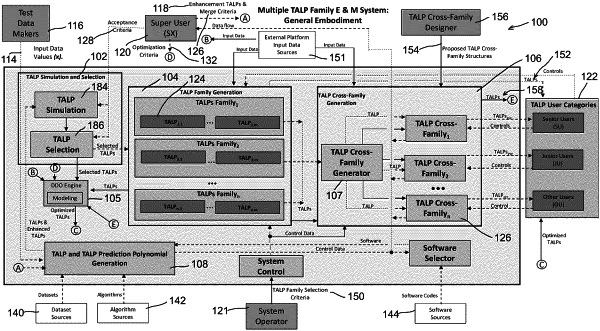| CPC G06F 8/447 (2013.01) [G06F 11/3664 (2013.01)] | 20 Claims |

|
1. A method of software enhancement and management, comprising:
inputting one or more data transformation algorithms, wherein the one or more data transformation algorithms do not include software application source code;
decomposing the one or more data transformation algorithms into a plurality of time-affecting linear pathways (TALPs);
executing the plurality of TALPs using a set of test data to generate associated value complexity prediction polynomials, advanced time complexity prediction polynomials, and advanced space complexity prediction polynomials;
simulating TALP behavior by executing the generated, associated prediction polynomials;
selecting one or more of the plurality of TALPs based on acceptance criteria, wherein the acceptance criteria includes one or more expected input to output value ranges, one or more expected TALP execution timings, and one or more expected TALP memory allocation requirements;
modeling one or more outcomes with actual expected input data values using the value complexity prediction polynomials, the advanced time complexity prediction polynomials, and the advanced space complexity prediction polynomials for each of the selected one or more TALPs; and
defining optimum TALP groupings for solution sets.
|